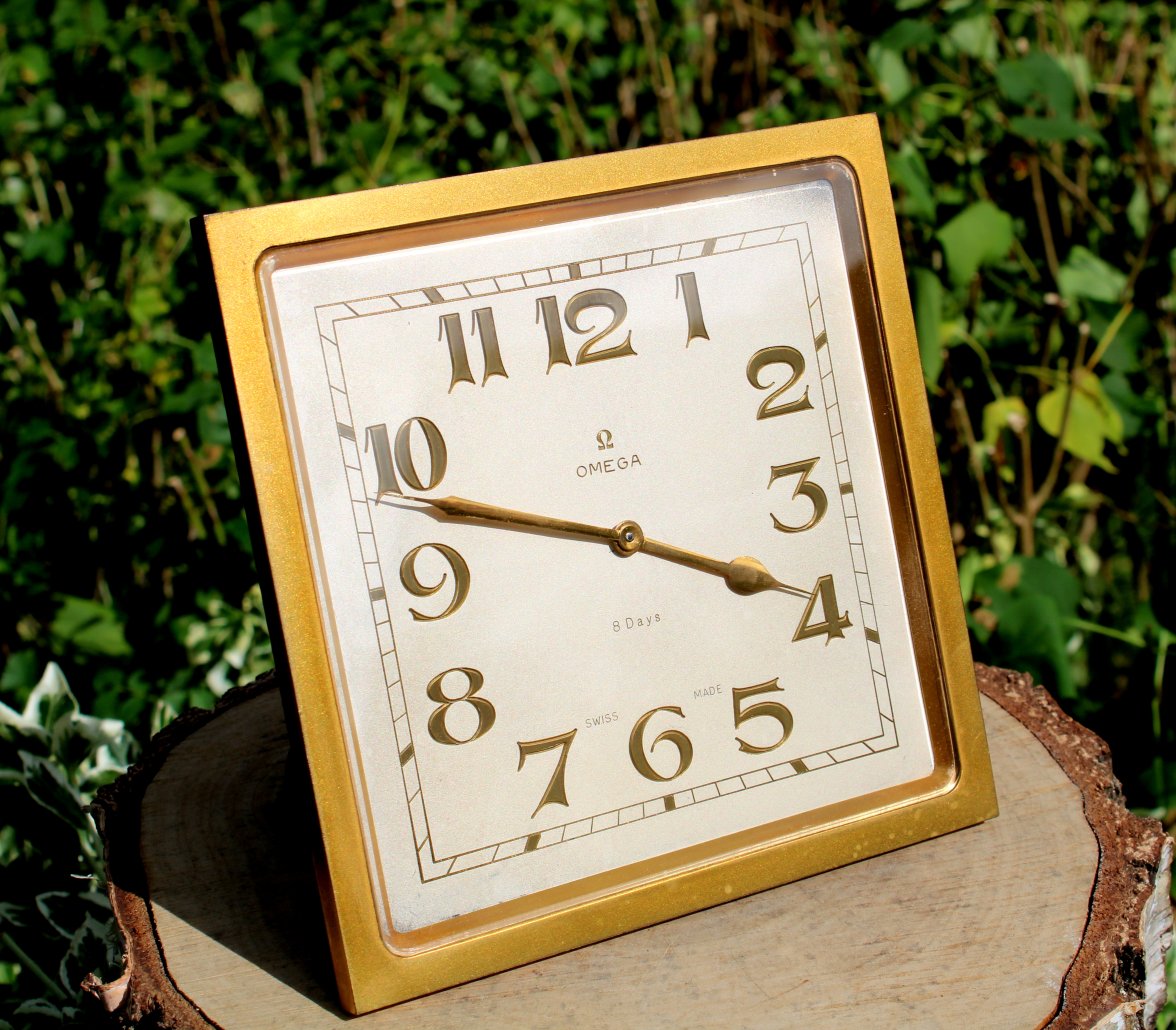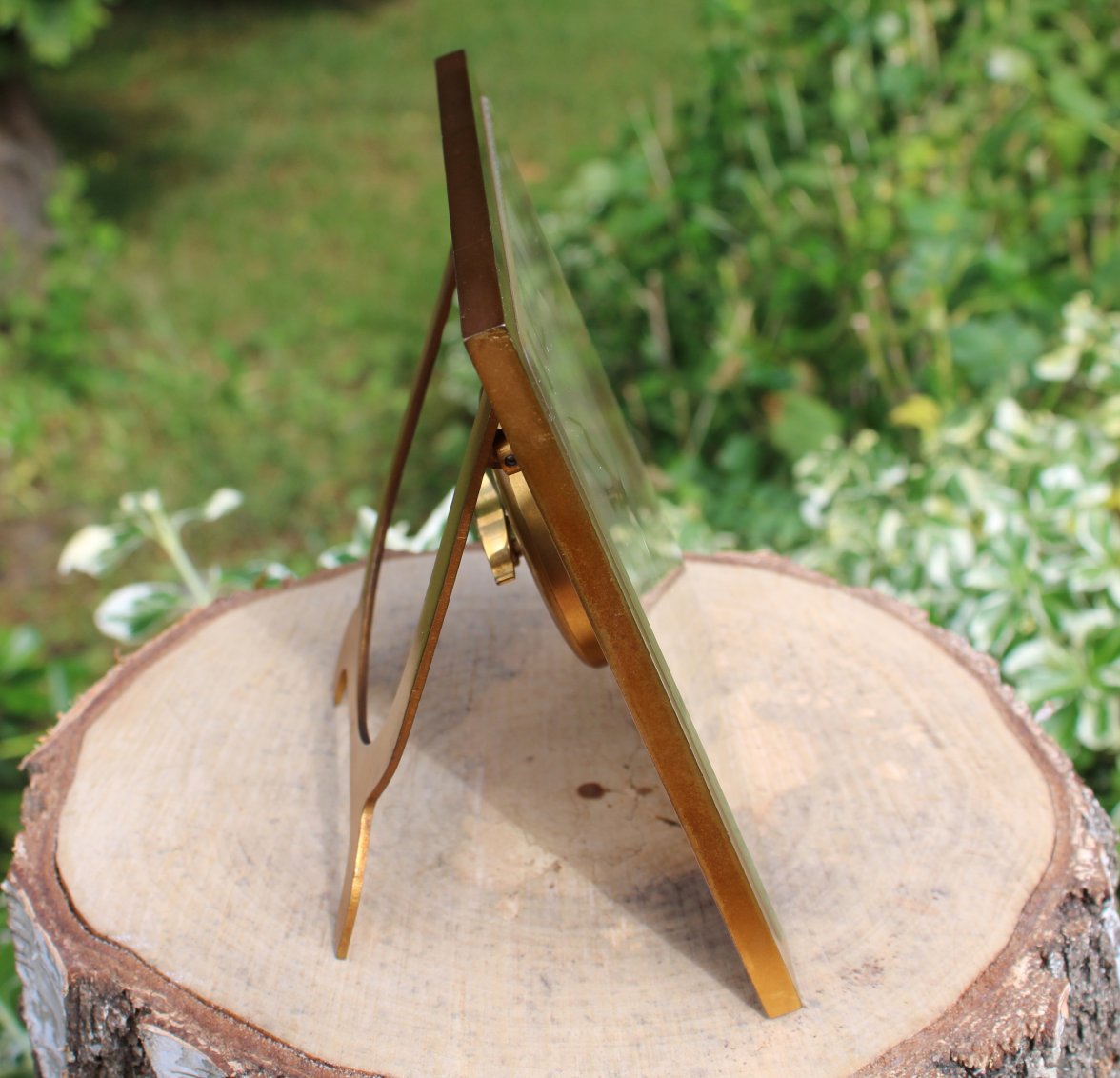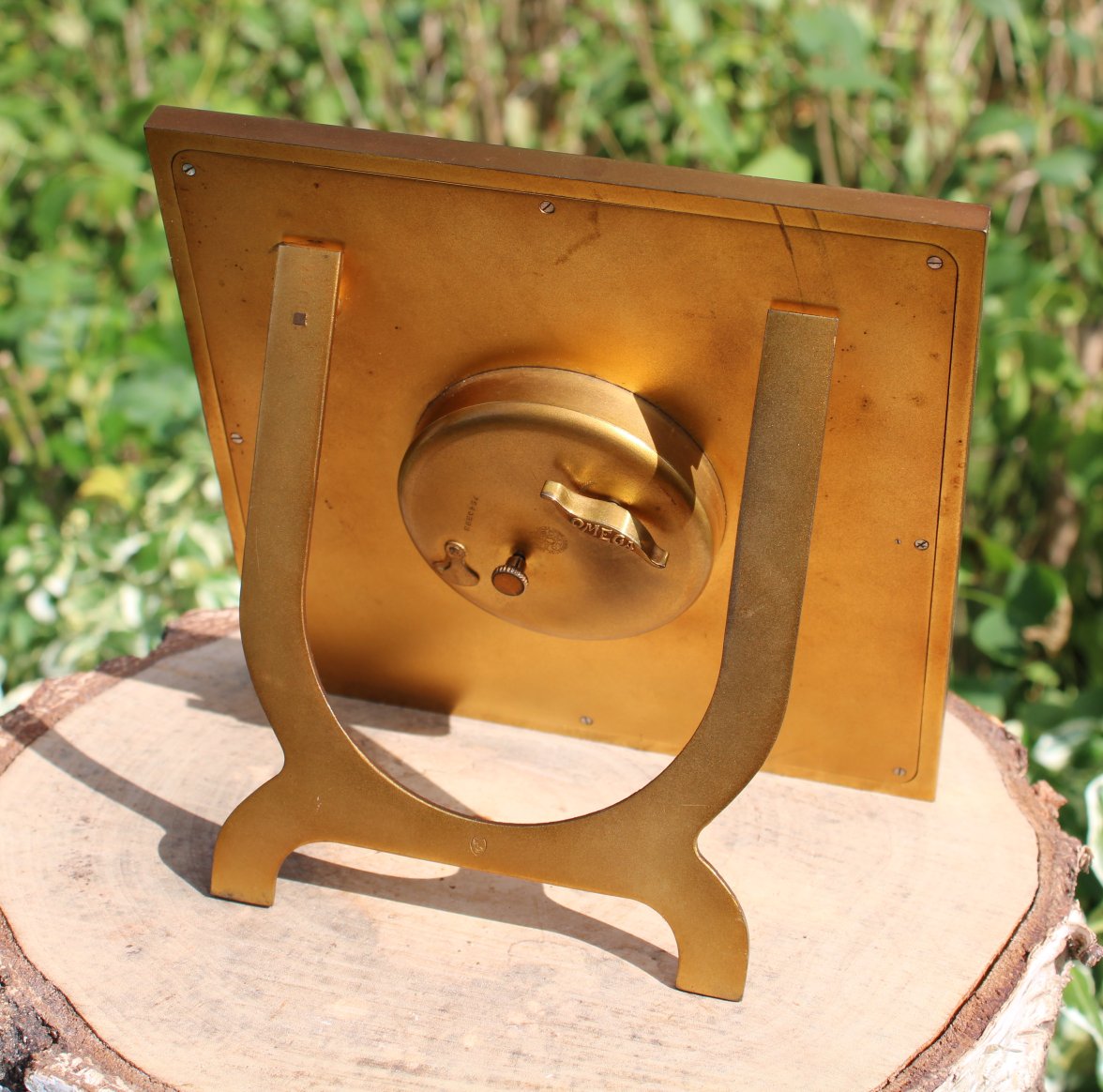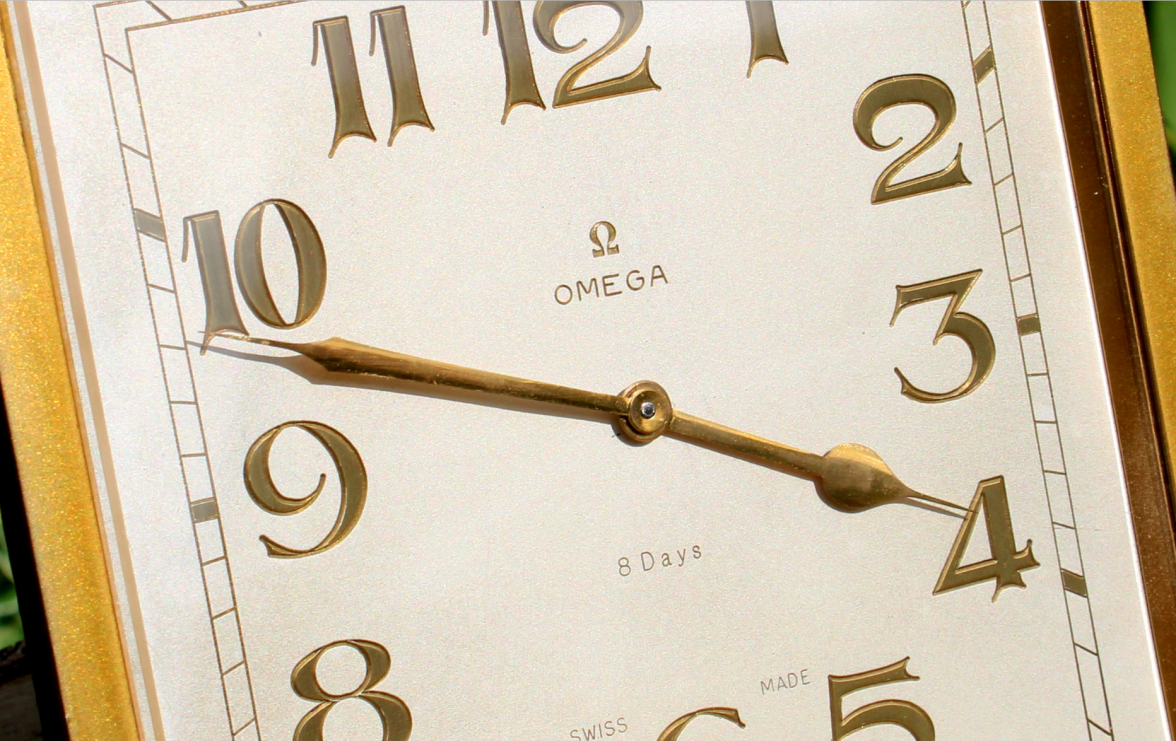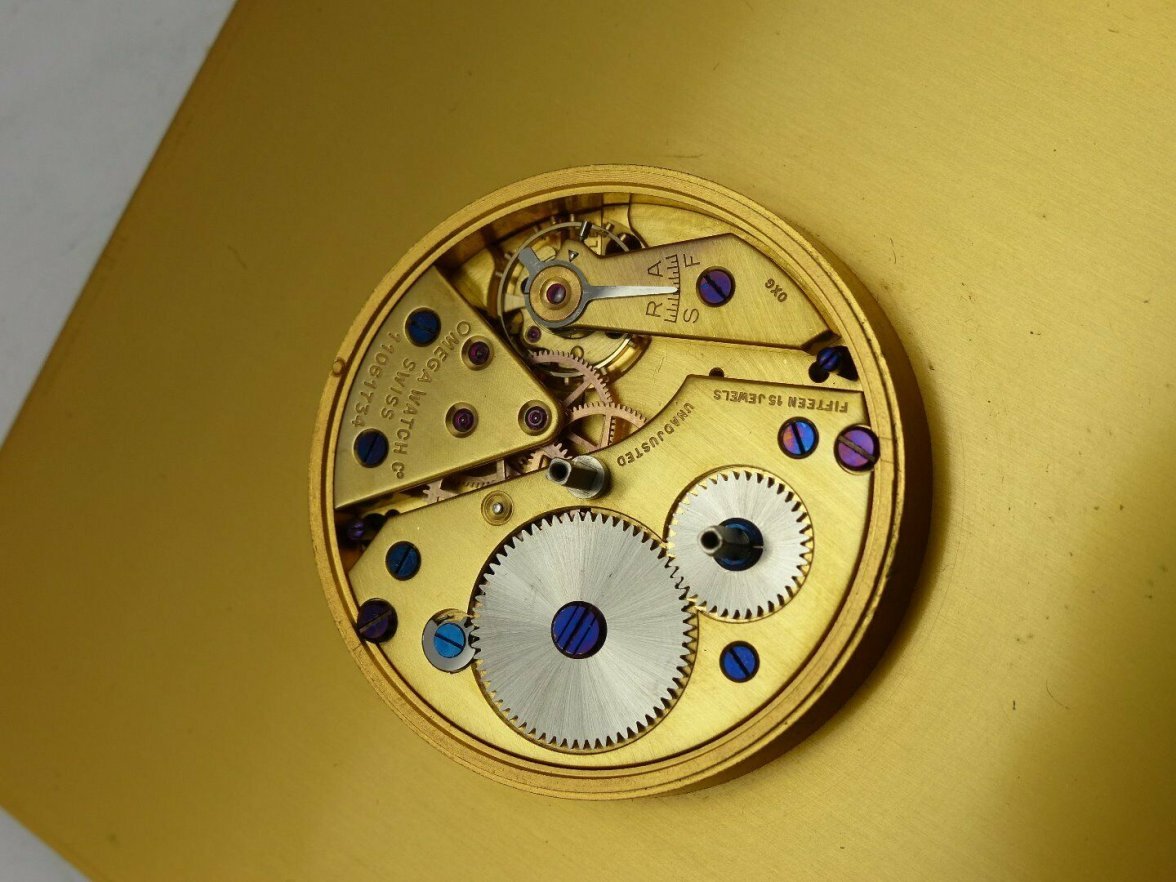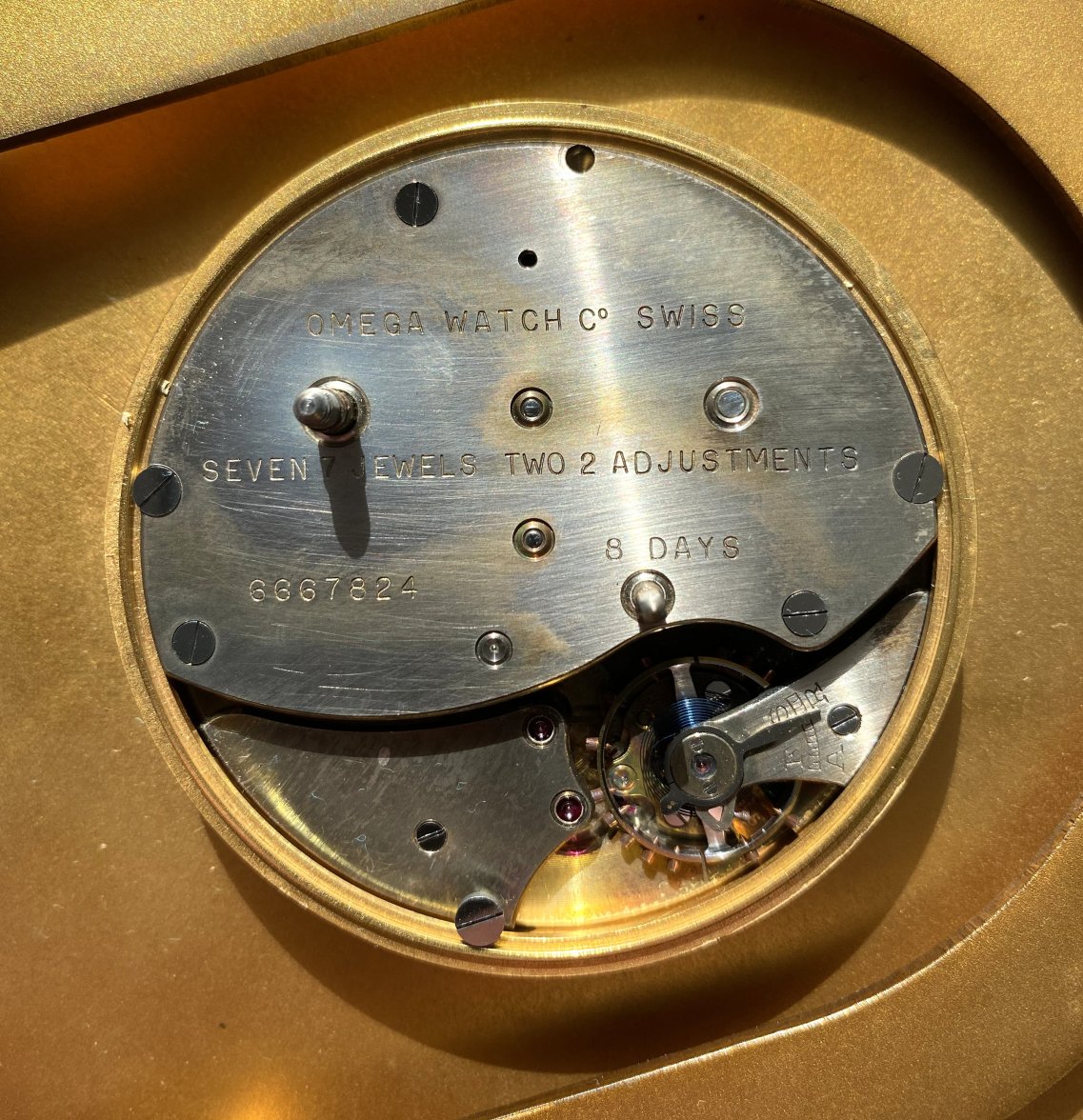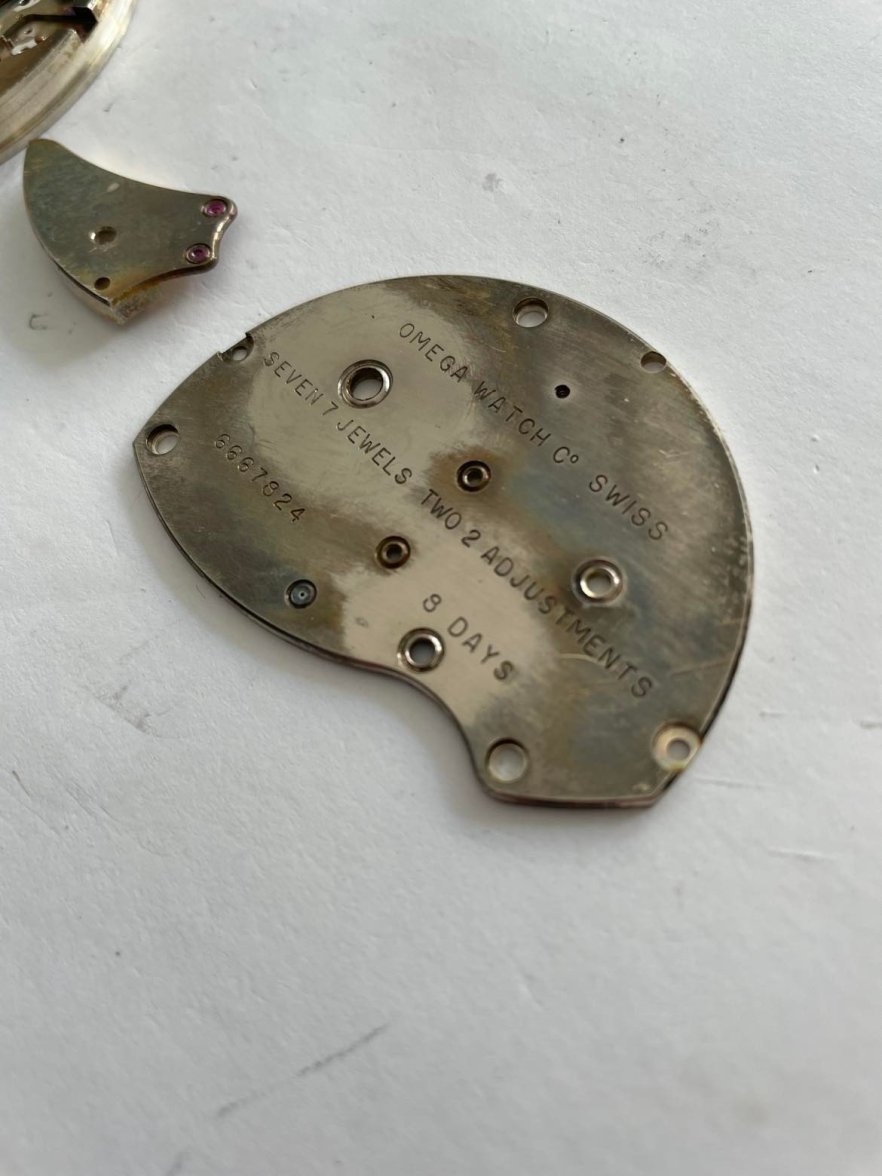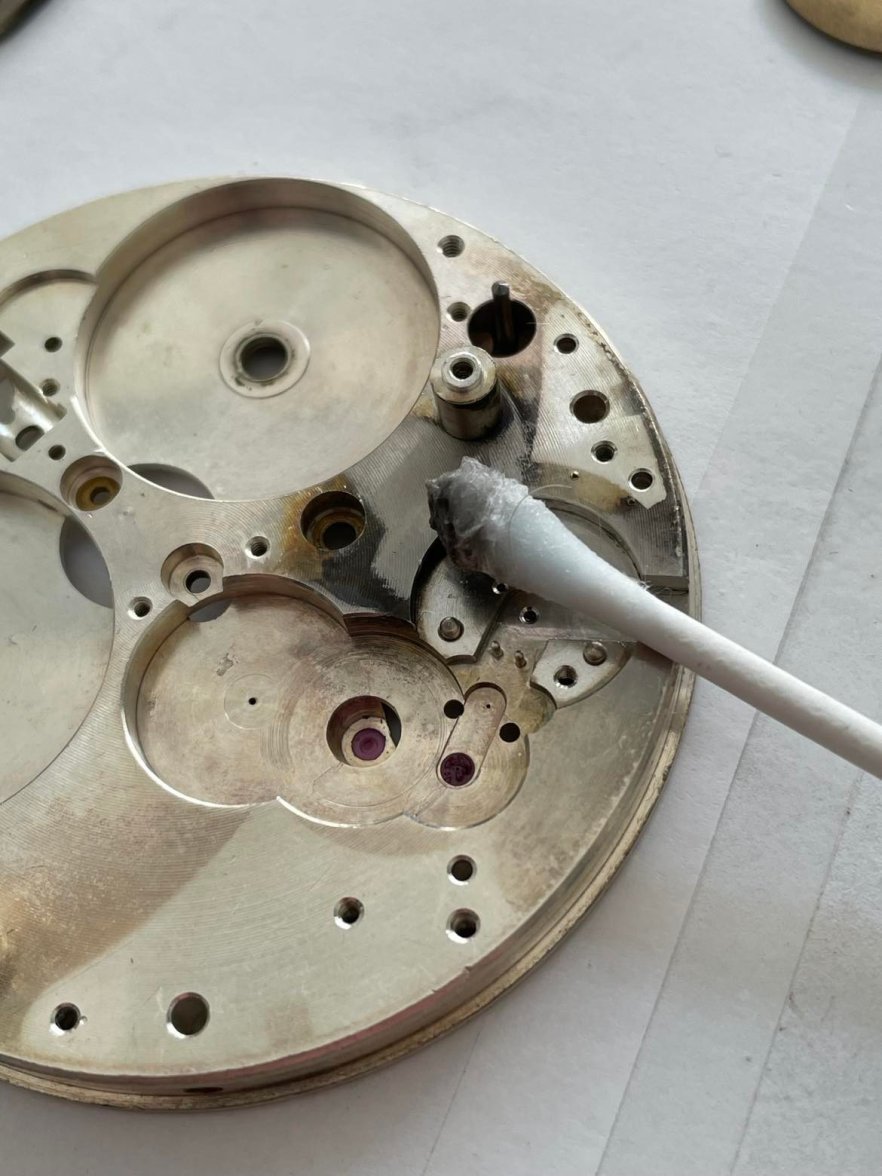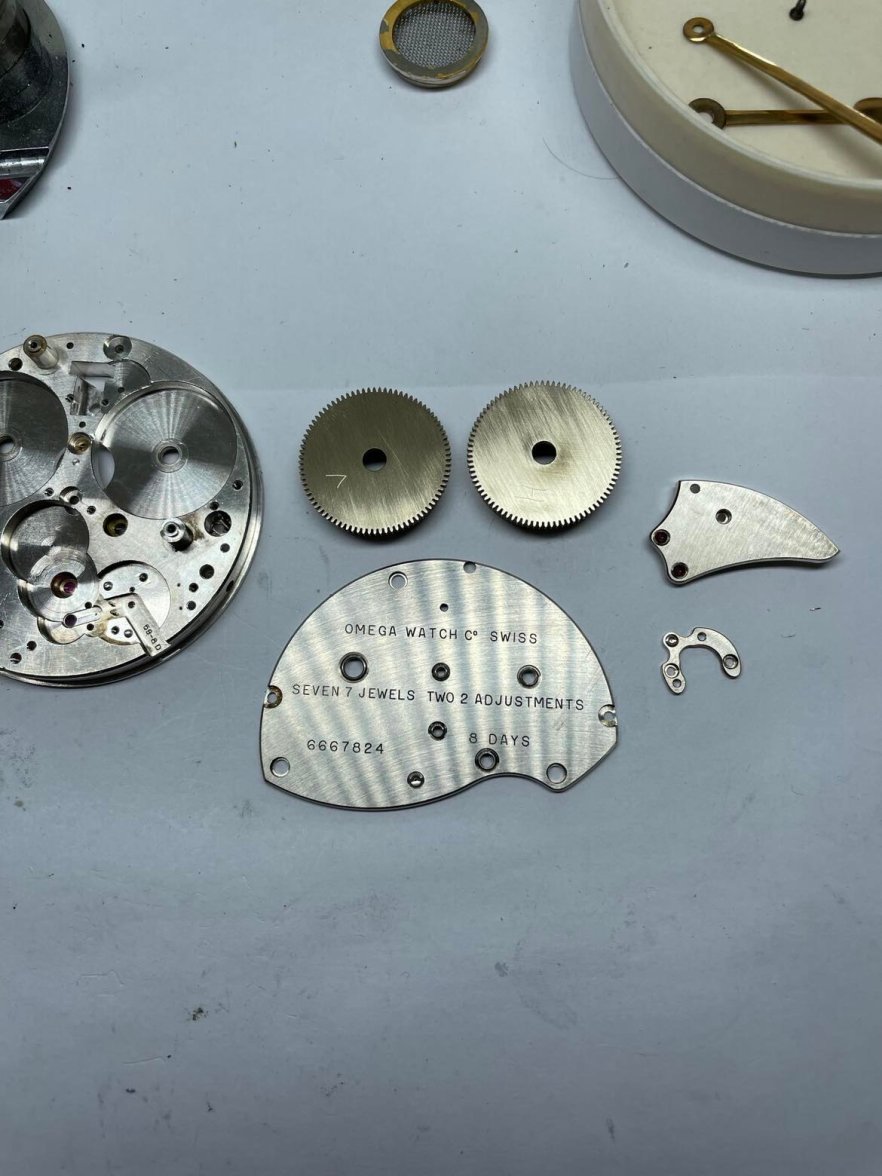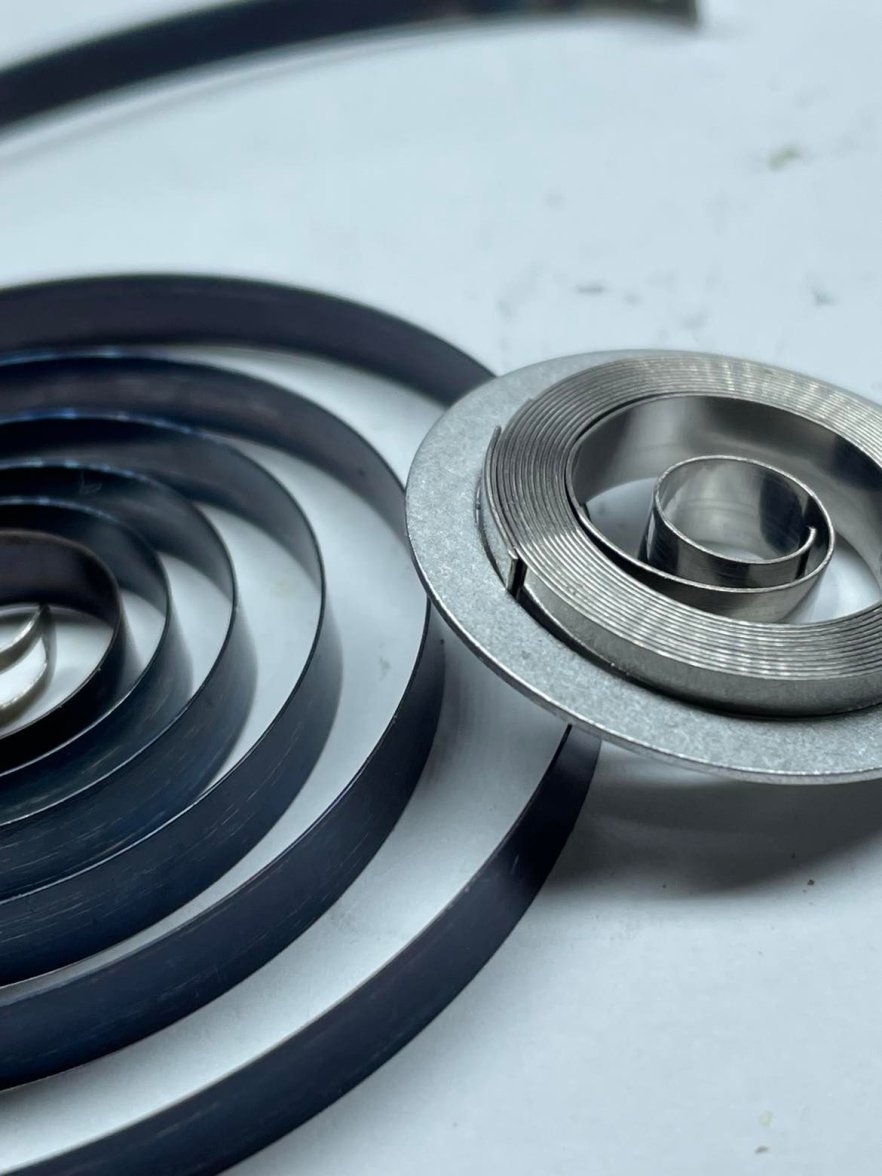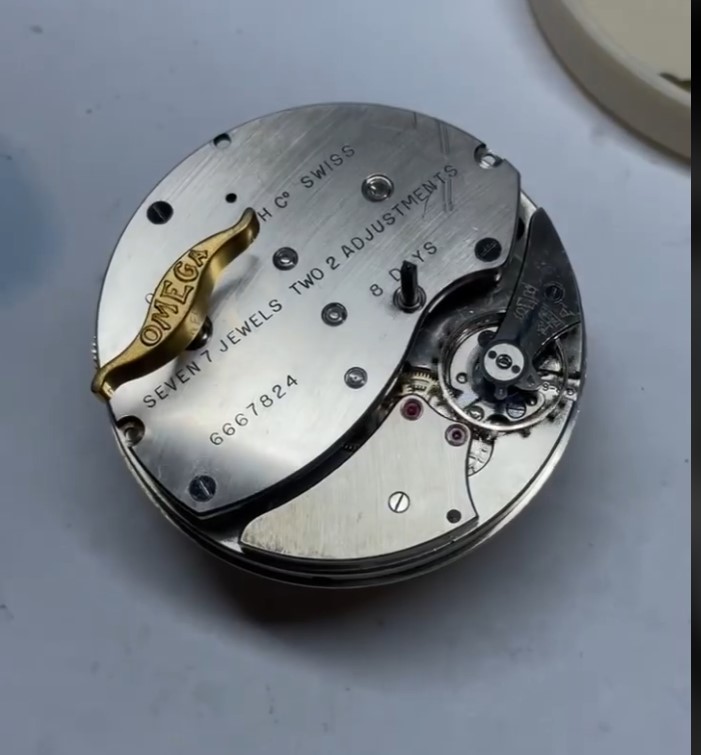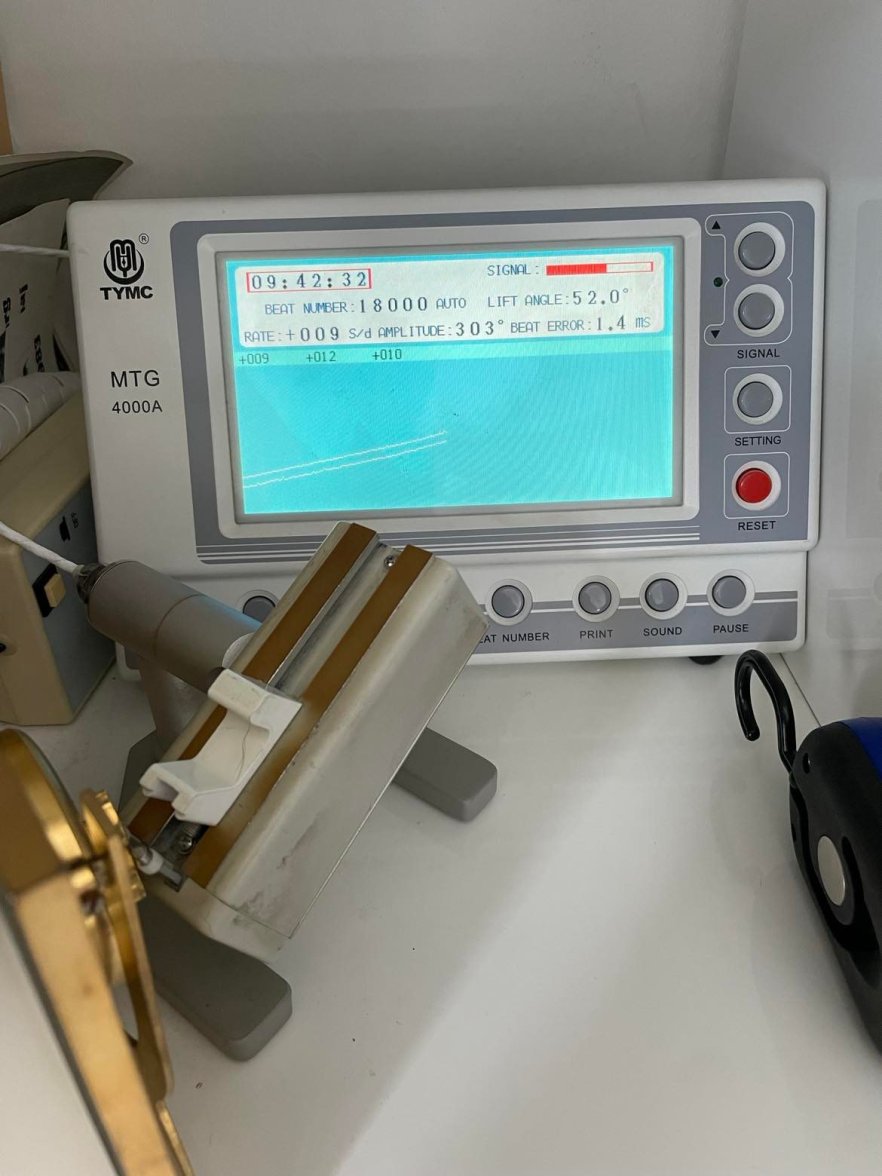A great week I - Omega Art Deco Table Clock
Tire-comedon
·Modest_Proposal
·Last week was one of the better ones 😀
Landed two Clocks I have been looking for for a while 😀
Art Deco Table Clock ca. 1932, caliber 59 8-D
Incredibly clean! Are those numerals recessed into the dial, or are they especially thick? They pop so well.
OMTOM
·I can offer some comments – only an opinion, the Omega Archive would have to confirm!
The 59-8D was the mainstay for all the larger Omega products from 1926 – lasting into the 1960s, although superseded by the (Lemania movement) 42.9 in 1947 and added to by the (Lemania movement) 53.7 in 1954. The 59-8D was produced in both key-wound and stem-wound (remontoir) versions. It was used in all clocks from ‘basic’ bedside travellers up to chronometer-standard clocks for display in jewellers shop windows and also with a military use in WWII (supplied to the British Admiralty). Later used by the Swedish maritime (naval ships, lighthouses etc). The early versions had 7 jewels, in about 1930 the 15-jewelled version was introduced – and still later in 1941 the jump second (59-8D SCS) 20-jewel version arrived.
Back to this clock. There were many versions of desk clock made (from 1926), a large proportion exported to the US. There were ‘families’ of references: Yann’s wonderful catalogue from 1928 shows the 14., 16. and 17. references. I think this clock is a 13. reference. I think it will be in the 13.500 series (probably a 13.506).
If I read that case number correctly (I see 7540398), that would date it at 1926.
The 59-8D was the mainstay for all the larger Omega products from 1926 – lasting into the 1960s, although superseded by the (Lemania movement) 42.9 in 1947 and added to by the (Lemania movement) 53.7 in 1954. The 59-8D was produced in both key-wound and stem-wound (remontoir) versions. It was used in all clocks from ‘basic’ bedside travellers up to chronometer-standard clocks for display in jewellers shop windows and also with a military use in WWII (supplied to the British Admiralty). Later used by the Swedish maritime (naval ships, lighthouses etc). The early versions had 7 jewels, in about 1930 the 15-jewelled version was introduced – and still later in 1941 the jump second (59-8D SCS) 20-jewel version arrived.
Back to this clock. There were many versions of desk clock made (from 1926), a large proportion exported to the US. There were ‘families’ of references: Yann’s wonderful catalogue from 1928 shows the 14., 16. and 17. references. I think this clock is a 13. reference. I think it will be in the 13.500 series (probably a 13.506).
If I read that case number correctly (I see 7540398), that would date it at 1926.
tdn-dk
·tdn-dk
·Incredibly clean! Are those numerals recessed into the dial, or are they especially thick? They pop so well.
logo and text is recessed into the dial, the numbers are both recessed on the edge and raised.
The dial have patina in the two of the corners 😀
tdn-dk
·I can offer some comments – only an opinion, the Omega Archive would have to confirm!
The 59-8D was the mainstay for all the larger Omega products from 1926 – lasting into the 1960s, although superseded by the (Lemania movement) 42.9 in 1947 and added to by the (Lemania movement) 53.7 in 1954. The 59-8D was produced in both key-wound and stem-wound (remontoir) versions. It was used in all clocks from ‘basic’ bedside travellers up to chronometer-standard clocks for display in jewellers shop windows and also with a military use in WWII (supplied to the British Admiralty). Later used by the Swedish maritime (naval ships, lighthouses etc). The early versions had 7 jewels, in about 1930 the 15-jewelled version was introduced – and still later in 1941 the jump second (59-8D SCS) 20-jewel version arrived.
Back to this clock. There were many versions of desk clock made (from 1926), a large proportion exported to the US. There were ‘families’ of references: Yann’s wonderful catalogue from 1928 shows the 14., 16. and 17. references. I think this clock is a 13. reference. I think it will be in the 13.500 series (probably a 13.506).
If I read that case number correctly (I see 7540398), that would date it at 1926.
Thanks 😀 Wonder if @Tire-comedon have a catalog with the 13 references 😀
Modest_Proposal
·I can offer some comments – only an opinion, the Omega Archive would have to confirm!
The 59-8D was the mainstay for all the larger Omega products from 1926 – lasting into the 1960s, although superseded by the (Lemania movement) 42.9 in 1947 and added to by the (Lemania movement) 53.7 in 1954. The 59-8D was produced in both key-wound and stem-wound (remontoir) versions. It was used in all clocks from ‘basic’ bedside travellers up to chronometer-standard clocks for display in jewellers shop windows and also with a military use in WWII (supplied to the British Admiralty). Later used by the Swedish maritime (naval ships, lighthouses etc). The early versions had 7 jewels, in about 1930 the 15-jewelled version was introduced – and still later in 1941 the jump second (59-8D SCS) 20-jewel version arrived.
Back to this clock. There were many versions of desk clock made (from 1926), a large proportion exported to the US. There were ‘families’ of references: Yann’s wonderful catalogue from 1928 shows the 14., 16. and 17. references. I think this clock is a 13. reference. I think it will be in the 13.500 series (probably a 13.506).
If I read that case number correctly (I see 7540398), that would date it at 1926.
I've seen this movement before. Can you tell me, at least, the caliber?
Edited:
OMTOM
·I've seen this movement seldomly used before. Can you tell me, at least, the caliber?
Modest_Proposal
·Yes, that’s an 8-day 42.9 (to which I referred above, dating from 1947). In fact to be precise, I think the full calibre name is 42.9 8-D CLEF-390 – there were different versions, some with an alarm and even a stem-wound/remontoir version. Thus after the calibre re-naming in 1949, it became a calibre 390. So the diameter (42.9 mm) is smaller than the 59-8D (59 mm) – both were 8-day calibres but the 59-8D had two barrels (it runs with only one functioning barrel!).
Thank you for that valuable information.
tdn-dk
·Ron_W
·Very nice 8 day clock, congrats !!
tdn-dk
·Ron_W
·Great result 😀 !
I like the symmetry in the train, and even more that copper ? lever with the Omega script. Nice clock.
I like the symmetry in the train, and even more that copper ? lever with the Omega script. Nice clock.
jantjewgm
·That’s great!
